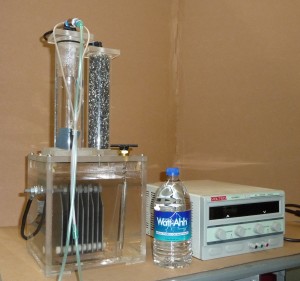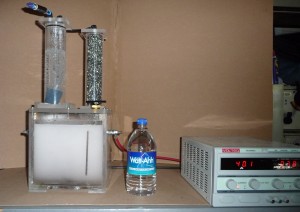
Update on Water Ion Technologies (Part 3)
In Part 1 and Part 2 of this series, we discussed the dire need for a new effective modality to reduce mortality of children worldwide from the ravages of antibiotic-resistant forms of pneumonia. We are not aware of any vaccine that will safeguard all children (and adults) from all types of pneumonia. In Part 3 of a 5-part series, we present a new nature-based modality. The centerpiece is a newly adapted version of the WIT Machines currently being manufactured by RK Mechanical, Inc. located in Denver, Colorado.
Challenges and Opportunities
The treatment of children under the age of 5 years old, who may or may not be infected with viral-strains of pneumonia that are resistant to both immunization and antibiotics and living in developing countries, have many major challenges as identified in Part 2 of this series. Our hope is to receive a grant, perhaps from a nonprofit organization, that we can support research by credible scientists and healthcare professionals to prove the efficacy of a smaller and more portable version of the WIT Machines, as follows:
- Reduce inflammation in the lungs.
- Hydrate the lungs for improved cellular communication and mitochondrial function (intrinsic energy for healing).
- Provide sanitation of indoor environments.
- Improve rate of patient recovery when compared to that of oxygen concentrators.

- Provide optimum respiratory gas flowrates for infants and children under 5 years old (between 0.1 and 2 liters per minute delivered via either nasal cannula or mask).
- Provide mobile respiratory therapy devices that are affordable, durable, user-friendly for front-line health workers, reasonably compact, and can operate using solar energy in low-resource areas where electricity is not consistently available.
- Eliminate need to refill and transport heavy oxygen cylinders.
- Maintain normal levels of oxygen in the blood.
- Eliminate need for additional humidification (which reduces risk of aerial bacteria).
- Administer gas to hydrate the nasal passages of the patient to avoid dryness and broken blood vessels.
- Manufacture the device on a massive scale.
- Service the device with minimal machine down time while in operation at clinics.
3-Cell WIT Prototype
 WIT Machines are a different technology from oxygen concentrators that use ambient air. Instead, the WIT® Machines use a U.S. patent-pending electromagnetic process to convert liquid water into the high energy gaseous form of water.
WIT Machines are a different technology from oxygen concentrators that use ambient air. Instead, the WIT® Machines use a U.S. patent-pending electromagnetic process to convert liquid water into the high energy gaseous form of water.
Our machines are scalable for the application and have been used in medical clinics since 2013. For gas production, either electric or solar power and a supply of purified (distilled) water is used to refill the water reservoir on a daily basis depending upon hours of operation, are needed for each device.
In October of 2015, Inventor and CEO of WIT International, LLC, Rob Gourley, designed and constructed a smaller (3-cell) device that generates a gas flowrate compatible with the lung breathing capacity of an infant and young children. As a comparison, the industrial-size WIT Machine used at the bottling plant has 80 cells. A photo of the 3-cell device is presented in this article as well as a video showing the operation of the prototype built by Gourley.
Sanitation 
One of the challenges identified above is prevention to avoid the spread of contagious pneumonia by sanitizing indoor environments such as hospitals. We offer nature-based, effective solutions since the gas-infused water stabilizes hydrogen peroxide.
To learn more about this new modality, please visit the WIT website or call Rob and Dana Gourley at 941-923-8972.
WIT Machine (3 cell) Prototype, October 2015
Read Part 4: New Modality for Sanitizing Reusable Respiratory Devices
